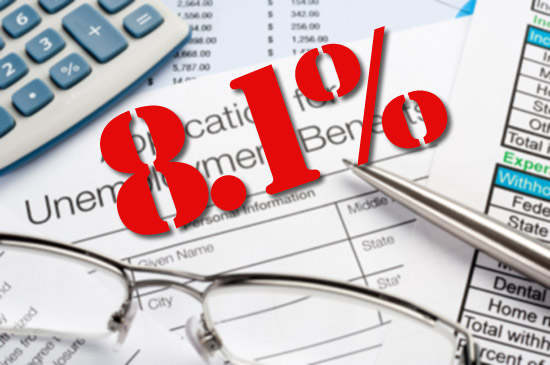Unemployment 8.1%: Good news or bad news for Obama?
May 4, 2012
Listen to the broadcast of Decision 2012 with Paul Gleiser, Monday, May 07, 2012.
On Friday, the Bureau of Labor Statistics released the jobless figures for the month of April. The headline: Unemployment Drops to 8.1%.
The fact that the rate dropped again is a good headline for the re-election effort of President Obama. What remains to be seen, however, is how the body of the story will impact the campaign.
The body of the story is this. The economy added 115,000 jobs in April, below the consensus expectation of 160,000 and the smallest such gain in six months. Economists generally agree that the economy must add about 120,000 jobs per month just to keep pace with population growth.
This statistic causes one to take a look at the Labor Force Participation Rate and that number is downright discouraging. The reason the unemployment rate ticked downward is that 342,000 people gave up on finding a job and left the labor force. But for that exodus, the unemployment rate would have risen in April.
Much attention is paid to the top-line unemployment figure. It’s a quick sound bite for Jay Carney to throw out at the daily White House press briefing, followed by something along the lines of, “The president is happy to report that the economy continues to be moving in the right direction.”
The decline in the workforce is less understood and less reported. But it is economically significant. What’s not immediately understood is how significant it is politically.
The economic significance is huge. The labor force participation rate in the U.S. stands at 63.6 percent, a 30-year low. Add to this grim statistic the fact that the number of people considered to be long-term unemployed, which is defined as receiving benefits (and thus still looking for work and thus still considered to be a part of the labor force) remains stubbornly at 5.1 million. The fact that this number hasn’t budged even as nearly 9 million have dropped out of the labor force since 2009 is testament to a very sluggish economy.
But the headline reads 8.1 percent and therefore the political significance of the April employment figures remains to be seen. Conditions such as this in an election year have little precedent. A 39-month string of unemployment standing above 8 percent hasn’t been seen since the Great Depression. Labor force participation at levels this low hasn’t been seen since 1981.
The fact that should keep Team Obama up at night is that four fifths of the reduction in the unemployment rate from its high of 10 percent in 2009 has occurred not from an increase in employment but rather from a decrease in the number of people looking for a job. Millions of former workers have simply given up.
If those workers were still in the labor force, the unemployment rate would be near 11 percent and no one would seriously believe that the president stood any chance of re-election. And there is little chance that these numbers will change much between now and the fall.
If Obama can keep attention focused on the headline number, the slowly but steadily decreasing official unemployment rate, his chances improve. If, however, Romney can get voters to understand the more arcane labor force participation numbers, he can possibly ruin Obama’s Thanksgiving.
We’ll see.

